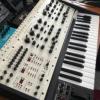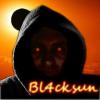
Posted
Hello folks,
I've been reading these forums for the last 6 months and viewing some tutorials. I have received the demo version and would like to get some opinions from users or creators
- has the demo have some limitations ?
- if I understood correctly I can even open some vst in synfire directly and synchronize my daw (ableton live )
- is there a place where users put some demos (I find some from Mark as well,looking to hear something on the rnb/electro side if possible)
- any plan to offers leasing payement option as samplitude used to have ? (or if someone wants to sell its version for a fair price -;) im a taker-;) I think the price is fair for the level of functionalities but maybe a bit too much to reach more users (20% less and it would be perfect
- will cognitone continue supporting this product in the next 5 years (nobody knows the future I know... But I bought the nemo sequencer 1 month before they close and it killed me !)?
Sorry if these questions have been discussed to death, all comments / advices are welcome.
Thank you
Isham
Sat, 2012-06-16 - 18:48 Permalink
Welcome Isham,
the demo can not save arrangements and other files, although you can still export to your DAW using the drag & drop technique explained in the video tutorials. This feature is not disabled in the demo.
Users are making all kinds of music using Synfire, although examples are posted rarely (for whatever reason). However, like with a sequencer or DAW, you need to know what results you want to achieve and tell the good ideas from the bad yourself. No serious software can do that for you (some entertainment products claim to do that, but they always generate the same canned styles). That would be like asking a camera to make movies for you.
I recently started a group on SoundCloud to encourage more example sharing, but this will take some tome to get going. I will also be making more examples when I get around to it in the course of shooting new tutorials.
The recommended workflow is to start hosting VST/AU in Synfire (most flexible and easy to handle), develop a composition until it is 90% mature, then relocate to a DAW for audio production.
Regarding the future, I should note that Cognitone is not a hobby project (the makers of the nemo sequencer stated their project was started out of passion and did not yield enough income to feed their families). We are aiming at growth.
Sun, 2012-06-17 - 17:11 Permalink
Thank you very much Andre your warm welcome and feedbacks !
You are of course right, a tool is always depending on the man behind the machine and I'm not looking for soft/machine doing it for me (ala Band in the box) as I'm looking to produce original songs first (or remixing some depending situation).
I see you put with users a lot of efforts preparing tutorials and guidelines (I'm reading the manual, well organized well done.)
So I continue my learning journey and will certainly join the club by July (best time to learn a new methodology.
I have one last conceptual question, synfire manages midi, melodyne manages audio (but export also midi if needed), any chance to have both worlds (audio/midi) covered in Synfire ? the ability to handle audio as a midifile ....
maybe it would be too much calculations...
Best Regards,
Isham
Normal
0
21
false
false
false
FR-CH
X-NONE
X-NONE
MicrosoftInternetExplorer4
DefSemiHidden="true" DefQFormat="false" DefPriority="99"
LatentStyleCount="267">
UnhideWhenUsed="false" QFormat="true" Name="Normal" >
UnhideWhenUsed="false" QFormat="true" Name="heading 1" >
UnhideWhenUsed="false" QFormat="true" Name="Title" >
UnhideWhenUsed="false" QFormat="true" Name="Subtitle" >
UnhideWhenUsed="false" QFormat="true" Name="Strong" >
UnhideWhenUsed="false" QFormat="true" Name="Emphasis" >
UnhideWhenUsed="false" Name="Table Grid" >
UnhideWhenUsed="false" QFormat="true" Name="No Spacing" >
UnhideWhenUsed="false" Name="Light Shading" >
UnhideWhenUsed="false" Name="Light List" >
UnhideWhenUsed="false" Name="Light Grid" >
UnhideWhenUsed="false" Name="Medium Shading 1" >
UnhideWhenUsed="false" Name="Medium Shading 2" >
UnhideWhenUsed="false" Name="Medium List 1" >
UnhideWhenUsed="false" Name="Medium List 2" >
UnhideWhenUsed="false" Name="Medium Grid 1" >
UnhideWhenUsed="false" Name="Medium Grid 2" >
UnhideWhenUsed="false" Name="Medium Grid 3" >
UnhideWhenUsed="false" Name="Dark List" >
UnhideWhenUsed="false" Name="Colorful Shading" >
UnhideWhenUsed="false" Name="Colorful List" >
UnhideWhenUsed="false" Name="Colorful Grid" >
UnhideWhenUsed="false" Name="Light Shading Accent 1" >
UnhideWhenUsed="false" Name="Light List Accent 1" >
UnhideWhenUsed="false" Name="Light Grid Accent 1" >
UnhideWhenUsed="false" Name="Medium Shading 1 Accent 1" >
UnhideWhenUsed="false" Name="Medium Shading 2 Accent 1" >
UnhideWhenUsed="false" Name="Medium List 1 Accent 1" >
UnhideWhenUsed="false" QFormat="true" Name="List Paragraph" >
UnhideWhenUsed="false" QFormat="true" Name="Quote" >
UnhideWhenUsed="false" QFormat="true" Name="Intense Quote" >
UnhideWhenUsed="false" Name="Medium List 2 Accent 1" >
UnhideWhenUsed="false" Name="Medium Grid 1 Accent 1" >
UnhideWhenUsed="false" Name="Medium Grid 2 Accent 1" >
UnhideWhenUsed="false" Name="Medium Grid 3 Accent 1" >
UnhideWhenUsed="false" Name="Dark List Accent 1" >
UnhideWhenUsed="false" Name="Colorful Shading Accent 1" >
UnhideWhenUsed="false" Name="Colorful List Accent 1" >
UnhideWhenUsed="false" Name="Colorful Grid Accent 1" >
UnhideWhenUsed="false" Name="Light Shading Accent 2" >
UnhideWhenUsed="false" Name="Light List Accent 2" >
UnhideWhenUsed="false" Name="Light Grid Accent 2" >
UnhideWhenUsed="false" Name="Medium Shading 1 Accent 2" >
UnhideWhenUsed="false" Name="Medium Shading 2 Accent 2" >
UnhideWhenUsed="false" Name="Medium List 1 Accent 2" >
UnhideWhenUsed="false" Name="Medium List 2 Accent 2" >
UnhideWhenUsed="false" Name="Medium Grid 1 Accent 2" >
UnhideWhenUsed="false" Name="Medium Grid 2 Accent 2" >
UnhideWhenUsed="false" Name="Medium Grid 3 Accent 2" >
UnhideWhenUsed="false" Name="Dark List Accent 2" >
UnhideWhenUsed="false" Name="Colorful Shading Accent 2" >
UnhideWhenUsed="false" Name="Colorful List Accent 2" >
UnhideWhenUsed="false" Name="Colorful Grid Accent 2" >
UnhideWhenUsed="false" Name="Light Shading Accent 3" >
UnhideWhenUsed="false" Name="Light List Accent 3" >
UnhideWhenUsed="false" Name="Light Grid Accent 3" >
UnhideWhenUsed="false" Name="Medium Shading 1 Accent 3" >
UnhideWhenUsed="false" Name="Medium Shading 2 Accent 3" >
UnhideWhenUsed="false" Name="Medium List 1 Accent 3" >
UnhideWhenUsed="false" Name="Medium List 2 Accent 3" >
UnhideWhenUsed="false" Name="Medium Grid 1 Accent 3" >
UnhideWhenUsed="false" Name="Medium Grid 2 Accent 3" >
UnhideWhenUsed="false" Name="Medium Grid 3 Accent 3" >
UnhideWhenUsed="false" Name="Dark List Accent 3" >
UnhideWhenUsed="false" Name="Colorful Shading Accent 3" >
UnhideWhenUsed="false" Name="Colorful List Accent 3" >
UnhideWhenUsed="false" Name="Colorful Grid Accent 3" >
UnhideWhenUsed="false" Name="Light Shading Accent 4" >
UnhideWhenUsed="false" Name="Light List Accent 4" >
UnhideWhenUsed="false" Name="Light Grid Accent 4" >
UnhideWhenUsed="false" Name="Medium Shading 1 Accent 4" >
UnhideWhenUsed="false" Name="Medium Shading 2 Accent 4" >
UnhideWhenUsed="false" Name="Medium List 1 Accent 4" >
UnhideWhenUsed="false" Name="Medium List 2 Accent 4" >
UnhideWhenUsed="false" Name="Medium Grid 1 Accent 4" >
UnhideWhenUsed="false" Name="Medium Grid 2 Accent 4" >
UnhideWhenUsed="false" Name="Medium Grid 3 Accent 4" >
UnhideWhenUsed="false" Name="Dark List Accent 4" >
UnhideWhenUsed="false" Name="Colorful Shading Accent 4" >
UnhideWhenUsed="false" Name="Colorful List Accent 4" >
UnhideWhenUsed="false" Name="Colorful Grid Accent 4" >
UnhideWhenUsed="false" Name="Light Shading Accent 5" >
UnhideWhenUsed="false" Name="Light List Accent 5" >
UnhideWhenUsed="false" Name="Light Grid Accent 5" >
UnhideWhenUsed="false" Name="Medium Shading 1 Accent 5" >
UnhideWhenUsed="false" Name="Medium Shading 2 Accent 5" >
UnhideWhenUsed="false" Name="Medium List 1 Accent 5" >
UnhideWhenUsed="false" Name="Medium List 2 Accent 5" >
UnhideWhenUsed="false" Name="Medium Grid 1 Accent 5" >
UnhideWhenUsed="false" Name="Medium Grid 2 Accent 5" >
UnhideWhenUsed="false" Name="Medium Grid 3 Accent 5" >
UnhideWhenUsed="false" Name="Dark List Accent 5" >
UnhideWhenUsed="false" Name="Colorful Shading Accent 5" >
UnhideWhenUsed="false" Name="Colorful List Accent 5" >
UnhideWhenUsed="false" Name="Colorful Grid Accent 5" >
UnhideWhenUsed="false" Name="Light Shading Accent 6" >
UnhideWhenUsed="false" Name="Light List Accent 6" >
UnhideWhenUsed="false" Name="Light Grid Accent 6" >
UnhideWhenUsed="false" Name="Medium Shading 1 Accent 6" >
UnhideWhenUsed="false" Name="Medium Shading 2 Accent 6" >
UnhideWhenUsed="false" Name="Medium List 1 Accent 6" >
UnhideWhenUsed="false" Name="Medium List 2 Accent 6" >
UnhideWhenUsed="false" Name="Medium Grid 1 Accent 6" >
UnhideWhenUsed="false" Name="Medium Grid 2 Accent 6" >
UnhideWhenUsed="false" Name="Medium Grid 3 Accent 6" >
UnhideWhenUsed="false" Name="Dark List Accent 6" >
UnhideWhenUsed="false" Name="Colorful Shading Accent 6" >
UnhideWhenUsed="false" Name="Colorful List Accent 6" >
UnhideWhenUsed="false" Name="Colorful Grid Accent 6" >
UnhideWhenUsed="false" QFormat="true" Name="Subtle Emphasis" >
UnhideWhenUsed="false" QFormat="true" Name="Intense Emphasis" >
UnhideWhenUsed="false" QFormat="true" Name="Subtle Reference" >
UnhideWhenUsed="false" QFormat="true" Name="Intense Reference" >
UnhideWhenUsed="false" QFormat="true" Name="Book Title" >
/* Style Definitions */
table.MsoNormalTable
{mso-style-name:"Tableau Normal";
mso-tstyle-rowband-size:0;
mso-tstyle-colband-size:0;
mso-style-noshow:yes;
mso-style-priority:99;
mso-style-qformat:yes;
mso-style-parent:"";
mso-padding-alt:0cm 5.4pt 0cm 5.4pt;
mso-para-margin:0cm;
mso-para-margin-bottom:.0001pt;
mso-pagination:widow-orphan;
font-size:11.0pt;
font-family:"Calibri","sans-serif";
mso-ascii-font-family:Calibri;
mso-ascii-theme-font:minor-latin;
mso-fareast-font-family:"Times New Roman";
mso-fareast-theme-font:minor-fareast;
mso-hansi-font-family:Calibri;
mso-hansi-theme-font:minor-latin;
mso-bidi-font-family:"Times New Roman";
mso-bidi-theme-font:minor-bidi;}
-->
Sun, 2012-06-17 - 18:29 Permalink
Hi Solaris,
If you have melodyn, you can export the midi out then import into synfire. Maybe into a library so that you break the original up into smaller snippets. Use those in a new song maybe with a different chord progression. you can also capture some of the sounds into a sampler in your daw. This is a great way of making remixes.
Melodyn is one of the best for audio to midi, synfire is one if not THE best for prototyping. Together with an artists imagination You Have the best remix toolset around.
Tue, 2012-06-19 - 23:39 Permalink
Thank you blacksun for this suggestion, last time I've tried melodyne as an audio to midi converter results were quite weird (maybe I need to review my process). Do you know other good Audio to midi converter around (hopefully most of my personal sound have the midi file associated when I recorded them.
Btw Well done for your UNICEF track, love it , great chord progression and sound selection, would you mind explaining (high level) which parts were prototyped with synfire ?
all the best,
Solaris aka Isham
www.soundcloud.com/isham
Wed, 2012-06-20 - 02:01 Permalink
Hiya,
You need to make sure you have the right version of melodyn...so you can convert polyphonic material to midi, some of the versions only work with monophonic stuff. It's also a lot easier if you ave the stems as you then know the approximate range of the sounds which makes it easier to deselect harmOnics that are incorrectly tagged by melodyne.
Thanks for the comments on glorious noise, will reply on the other thread about how sf was used..
Wed, 2012-06-20 - 05:40 Permalink
Do you know other good Audio to midi converter around
The other day I purchased Capella Wave Kit. I didn't have the time yet to make a detailed test, but the demos are quite impressive. It does polyphonic audio to midi conversion and even automatically separates melody, accompaniment and bass. Maybe it can be a useful additional tool for the work with Synfire.
Wed, 2012-06-20 - 22:03 Permalink
Thank you blacksun and Juergen for these tips (yes last time I've used melodyne it was 2 years at a friend studio and tried the audio to midi functionality)
I will browse the web for Capella wave kit to see what it could bring .
As I mentioned on blacksun new song thread: I need to balance a bit my sonic goals as my main focus was sound quality/production the last year and need to come back to the basics of composition and challenge myself as well, SFP is certainly an interesting tool to restart this journey.
So instead of investing in a new preamp or other toy, our music will get a new substance I hope with, with passion and efforts.
Last question: I read somewhere synfire may use some templates configuration for hardware/software , where could I find the list please !
Best
Solaris
Wed, 2012-06-20 - 23:49 Permalink
HIya Solaris,
You can check out the ones at (http://www.cognitone.com/downloads/index.stml?o=2&p=0) there are 2links on the left, raw and edited. The edited ones have things like paying ranges defined.
The recent updates now give the software the ability to scan many vsts for their sound presets and discover playing ranges automatically, but not all vsts support this.
Also for the most part I use private instruments, these are linked to the song via drones. Vsts used like this automatically load the right instrument and it's possible to get it to send sound bank and patch selection messages to select the right sound on external hardware... All without defining every sound.
Sat, 2012-06-23 - 20:01 Permalink
Synfire doesn't handle audio but if you cant get your vocal melody into midi form; either by writing, recording, or converting audio through software like melodyne or hardware such as the sonuus i2M, you can work with it in musical form and then substitute for audio later in your Audio editor. Synfire does support written lyric input.
Mon, 2012-06-25 - 04:05 Permalink
You can easily sync up SFP to your DAW thru rewire. SFP will control DAW, then you will have your audio. I followed the example Andre recently uploaded (Synfire and Logic), and it works fine. I fed SFP Chords over to Logic and have it driving Yamaha Tyros4 style generators in real time. This way I can create parts in SFP and hear how they are going to meld with parts in T4 or already committed to Logic.
I'm not using drones (although you can do that) Cause I am directly driving MIDI inputs not Virtual Instruments.
If you go to the trouble of creating a midi track of a vocal, yes, you can create harmonies (in MIDI data form) which in turn will have to drive your Autotune, melodyne etc (that would depend on plugin you have, if they have that capablility ). (I've never explored that particular avenue, so you'll have to verify it for yourself. Worse case scenerio, SFP generates piano harmonies, and your singer learns them and lays them down.
Works like a charm
Fri, 2014-05-09 - 17:28 Permalink
edit: sory this is a little off topic but i couldn't resist also write here too...
@ juergen !
probably i would never know anything about this software (Capella Wave Kit) if you didn't mention here!
after demoing and figuring it out how to use this ..probably one of the best polyphonic audio to midi tool
just purchased afew minutes ago!
so...,
Thank You So Much for this great share Juergen !
Best Wishes
Yıldırım.
Sat, 2014-05-10 - 10:03 Permalink
@ juergen !
probably i would never know anything about this software (Capella Wave Kit)
Glad you like it. Yes, I also think it's an impressive software. And at this price. Not only the audio to midi conversion, also the audio editing features are amazing. Isolating of individual notes of a polyphonic audio mixdown and adjusting pitch and volume of them is not entirely new but the way how you have access to all these sound events of an audio file is really extraordinary. You can do things that otherwise are only possible with Sony's Spectralayers.
Sat, 2014-05-10 - 16:36 Permalink
i couldn't agree more... price and functions definitely impressive ,
I didn't test Spectralayers yet,
also learning CWK functions is still in proggress,
watching tutorials again and again and make lots of trial error etc.
but i am very satisfied with what i get even so far...
to my expectations i can say with no doubt ; its also better than Melodyne .
:thumbsup:
Sat, 2014-05-10 - 19:22 Permalink
how easy would using that audio to midi (capella wave) be for a non german, english only speaker
This is certainly not easy. It has a fairly detailed documentation and you could try to "translate" it for example via Google Translate. But maybe you know how Google Translate translates. A small sample:
introduction
What is the holistic recognition ?
The previous recognition capella wave kit (version 1.0) was working " note for note " , which meant that depending on the complexity of the music was necessary more or less rework to the "single" detected tones in a meaningful notation assign " " . This eliminates rework in holistic recognition largely , which is now in a position , even in complex material to provide directly a practical notation :
Detection of three types of voices : melody , accompaniment and bass
Melody and bass ( unanimously ) note for note be recognized more or less; the melody recognition is to distinguish the situation , singing tones of instrumental tones.
In recognition of the accompaniment does not move , note for note , but the tapestry of sounds is harmonically analyzed. The harmonies found are exposed as notes , with a solid frame (desired rhythm , difficulty , etc.) can be specified by the user. This type of recognition is very robust and immediately gives a decent score.
In addition, chord symbols are output.
Do you understand that? Then you can try it. Honestly, the question can actually only be answered by Soundcase.
Sat, 2014-05-10 - 21:28 Permalink
Do you understand that? Then you can try it. Honestly, the question can actually only be answered by Soundcase.
i didn't see that coming while i am reading your post and made me laugh :-)
ok now my turn then... but i need to say this first ,
my current aim just for the grab midi files from the soundtracks
especially from the scene scores .
so i am not pannig to go deeper than this for now .
...
i do not know even one word German also my English is terrible too.
so how did i start ?
installed demo which is no time limit to use if i am not mistaken..
(only you cannot import over 40 sec its simply ignores if source file longer than 40 sec)
watched youtube tutorials over and over ..and over again
and tried to make same things as in the videos by trial-error..
till i get the exact procedure that i need to learn...
Honestly thats it nothing more.
There is never tutorials that covers much more functions and details
but i was looking for the grab exact notes from scores basically..
so,
this was the first - fire starter tutorial for me
uses old version but you can easily follow all paramaters in current version too.
i hope it helps.
Best Wishes
Yıldırım.
Sat, 2014-05-10 - 21:45 Permalink
this was the first - fire starter tutorial for me
http://www.youtube.com/watch?v=E6cN-IW08ek
I found this most impressive (at the current version 2): Automatic separation of bass, melody and accompaniment of a song and creation of a new accompaniment for various ensembles:
Sun, 2014-05-11 - 00:07 Permalink
Yes absolutely i agree that
this part is a bit advanced and also more fun if you get what you want.
but at this point i need more practise to use this way...
i am still trying to figure it out, how to type BPM manually instead of tapping whole song for example.
but again when you done creating tempo map
you ll get brand new arrangement / idea... based on magically recognised progression!
Sun, 2014-05-11 - 23:36 Permalink
Hi,
do not switch page to the English, its German only .
(http://www.capella.de/de/index.cfm/produkte/capella-wave-kit/info-capel…)
Mon, 2014-05-12 - 16:20 Permalink
It is difficult to ascertain what is possible with wave kit 2 and even i can speak / listening german at a modest level ..the manual seems rather complicated.
I like to see the instrument audio names and midi instrument names in the program , then i can compare the recognition






